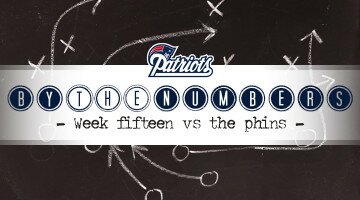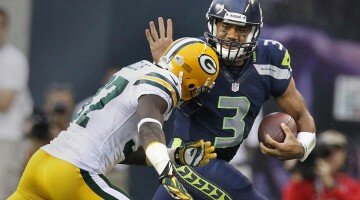Most kick returns for a touchdown are big plays, changing the momentum in the game. This is not one of those plays. The Chicago Bears were being thoroughly destroyed by the Green Bay Packers, eventually losing 55-14 when one of those many Packer kickoffs resulted in this Bears flawless kick return.
The kicking game is often pushed aside by the game’s other phases. A punt means offensive failure or defensive success, with the director loading up commercials and fans heading for the beer stands. Extra point attempts are little more than a footnote after the excitement of a touchdown and the delay of video review. The kickoff is the most ignored. It is sandwiched by commercials, eviscerated by rule changes and likely on the path to extinction in the next five years. Most people simply don’t care about special teams.
But I do.
I love special teams. I’m the guy who sits on his couch during football games, phone in hand, measuring snap-to-kick times and hang time for punts. I’m the guy who drags his friends out to a football field on Saturdays to make kicking videos. That’s me. And let me tell you, the Chicago Bears flawless kickoff return in Week 10 is the best special teams play I have seen all year.
There have been a lot of big plays on special teams in 2014. There was the St. Louis Rams fake punt return. There was the New York Jets attempting to maybe just maybe fool one person in a stadium of nearly 70,000 and then failing to do so. But this play stands out beyond all the others. I’m probably building up too much hype right now, so let’s roll the tape.
Chicago traveled to Green Bay to face the Packers for their Week 10 matchup, hoping to turn their season around. They didn’t. With 4:33 left in the fourth quarter, the Bears found themselves getting run out of Lambeau Field, trailing 55-7 after intercepted and took the pick back for a touchdown. Following the extra point, Chicago wearily trotted out their kickoff return team:

Circled in red are the eleven Bears. They start with seven men near the 50-yard line, and a diamond formation deep in their own territory for the remaining four players. Green Bay is lined up in a 5×5 formation, with five players on either side of the kicker, (#2).
As Crosby kicks off, the Bears put their play into motion:

Bears cornerback (#24) is the third man from the right along the 50-yard line. He immediately pinches up and attempts a quick jam on Green Bay’s R3. The Packers player does exactly what is taught, immediately altering his route butt-side of Williams, avoiding the block and quickly returning to his lane. This failed block may be one of the reasons why the Bears released Williams the next day.
The other two Bears on the right side of the frame drop back towards their own end zone. At the same time, the diamond at the bottom of the frame begins to consolidate. (#83) and (#94) drift towards the right hash mark, while (#32) heads towards the left hash mark. Meanwhile, circled in red, (#82) waits for the ball.
As the play continues, the Bears retreat towards their own end zone:

Bennett and Washington, indicated by the red X, are next to each other at the right hash mark. Perry is seven yards in front of Chris Williams, who is circled in red and still waiting to receive the kick at his goal line. Near the top of the screen, indicated by the yellow arrow, the Packers’ R3 has looped behind Teddy Williams, who has completely whiffed on his block. This will be the one mistake the Bears make on this play.
Chris Williams receives the ball a yard deep in his own end zone:

Bennett and Washington work strongly back to the left side of the field to take on the Packers’ L5 and R5 (indicated by yellow arrows) and seal them off. At the same time, the two Bears who had initially retreated from the 50-yard line (on the right side of the screen) work over to seal off the R4 and R3, the latter of whom was missed by Teddy Williams.
These four blocks are critical to this play. The Packers on the left side of the field are too far away to play a meaningful role in tracking down Chris Williams, but the four Packers targeted by these blocks all have a chance to make a tackle. Execution on every one of these blocks is crucial for enabling a long return.
As this occurs, Chris Williams begins to bring the ball out of the end zone, led by Perry:

Most of the Bears are attempting to seal off players in the center of the field. However, Perry is tasked with clearing the path directly in front of Chris Williams. Perry heads slightly upfield before altering his path and heading to the right. Behind him, Chris Williams mimics his route, taking the ball out to the 5-yard line before bouncing to the right behind Perry. Perry then targets the Packers’ R2 with his block, as he is the nearest free man on the right side of the field.
Meanwhile, Teddy Williams has worked back down the field after his initial missed block, and is now setting up for a block on the Packers’ R1. Although he failed to complete his initial responsibility, he still has the ability to make an impact in this play. The R1 is completely unblocked at this point ‒ in the exact spot where the return is designed to go ‒ and Williams has a chance to atone for his earlier mistake by taking him out.
As Chris Williams moves to his right, the Bears engage on nearly all of their important blocks:

Circled in yellow, the Bears have destroyed the Packers defenders in the middle of the field; it is complete chaos. Although Washington’s man is running free at this point, he is so far behind the play that he has no chance of catching Chris Williams. Bennett and two other Bears are still locked up with other Packers defenders, preventing them from getting outside to help.
It is on the outside that Chicago’s blocking really shines. Highlighted in the three red circles are three perfect blocks by Perry, (#45), and the newly redeemed Teddy Williams. Take a minute to look at the positioning of these blockers. The angles are exquisite. The technique is phenomenal. The timing is outstanding. It does not get any better than this. The execution on these three blocks should be used as teaching material for NFL special teams coaches for years to come.
This is kick return nirvana.
Chris Williams doesn’t need anyone to tell him these are good blocks. He sees the gaping hole created by his teammates and sprints through it, leaving him one-on-one with the kicker:

By now, you’ve seen this script a thousand times: Kicker tries to cut down the angle; real football player is faster, stronger, quicker, and generally more athletic; real football player wins. Chris Williams sees Crosby coming to the outside to try to slow his return, and immediately cuts back to the inside to free himself up. From there, it is a foot race with the outcome preordained.
The Bears laid an egg for nearly all of this game. But while their offense and defense were only notable because of their failings, Chicago’s special teams provided a tremendous play towards the end of this game that truly stands out. It may lack the flash and flare of other kick returns, but it is an absolutely brilliant execution of a well-designed play. In what has been a disappointing season for Bears fans, they can take solace in knowing that this sequence rates among the NFL’s best in 2014.
All video and images courtesy NFL.com and NFL Game Rewind.
Chuck Zodda is SoSH Football Central‘s NFL and college football expert on special teams, having written about walls of doom, the importance of staying in your lane, how to fake a punt return, coverage team superstars, the greatest punt returner of all-time, the humanity of punters, how to block a punt and the Jets.
Chuck Zodda
Latest posts by Chuck Zodda (see all)
- Tavon Austin Punt Return: Fassel Strikes Again - December 11, 2014
- Vikings Block Party - December 4, 2014
- Grambling State Returner Domino Sprints Thru Southern - December 3, 2014











A garbage time kickoff return against a jogging, content opponent. Who the hell cares.